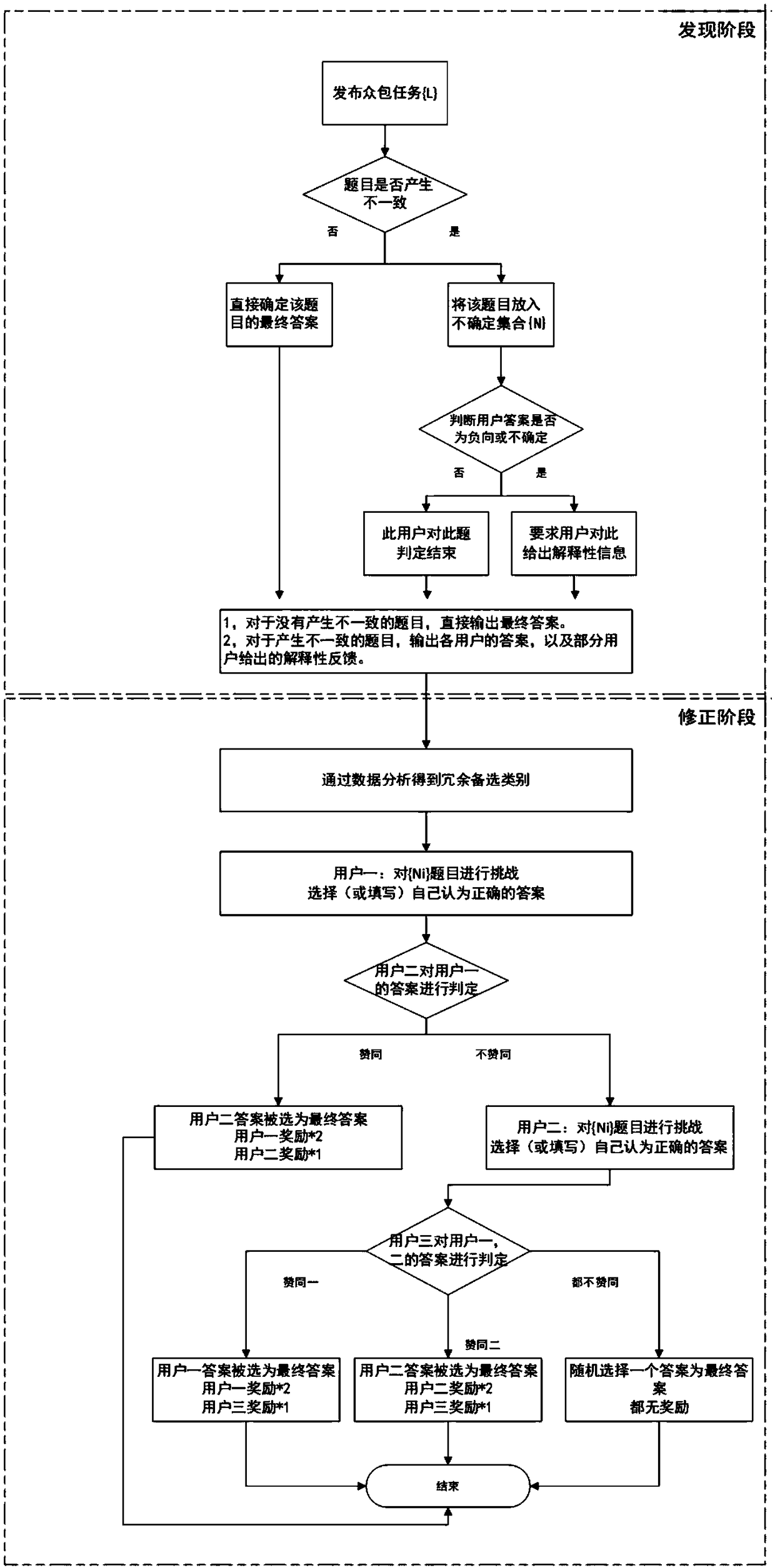Collaborative crowd-sourcing quality control method based on user inconsistency information
A quality control method and consistent technology, applied in data processing applications, instruments, calculations, etc., can solve problems such as undiscoverable ambiguity tasks, low-quality crowdsourcing results, and inability to filter out data ambiguity, etc., to improve accuracy and overcome The effect of cost increase and labor reduction
- Summary
- Abstract
- Description
- Claims
- Application Information
AI Technical Summary
Problems solved by technology
Method used
Image
Examples
Embodiment Construction
[0022] refer to figure 1 , the method of the present invention mainly includes two stages: an ambiguity discovery stage and an ambiguity correction stage. In the stage of ambiguity discovery, potential ambiguity tasks in crowdsourcing are discovered through inconsistent information generated by users and feedback from users with "negative answers", and then redundant candidate categories are obtained through data analysis, which can be used for reference by workers in the correction stage ; In the revision stage, the present invention requires workers to iteratively revise those uncertain tasks generated in the first stage. The details are as follows:
[0023] (1) Ambiguity discovery stage:
[0024] During the execution of crowdsourcing tasks, different workers may produce different answers to the same task, and these different answers may contain knowledge that even the requester has not discovered. In order to obtain this part of knowledge more effectively, when workers d...
PUM
 Login to View More
Login to View More Abstract
Description
Claims
Application Information
 Login to View More
Login to View More - R&D
- Intellectual Property
- Life Sciences
- Materials
- Tech Scout
- Unparalleled Data Quality
- Higher Quality Content
- 60% Fewer Hallucinations
Browse by: Latest US Patents, China's latest patents, Technical Efficacy Thesaurus, Application Domain, Technology Topic, Popular Technical Reports.
© 2025 PatSnap. All rights reserved.Legal|Privacy policy|Modern Slavery Act Transparency Statement|Sitemap|About US| Contact US: help@patsnap.com

